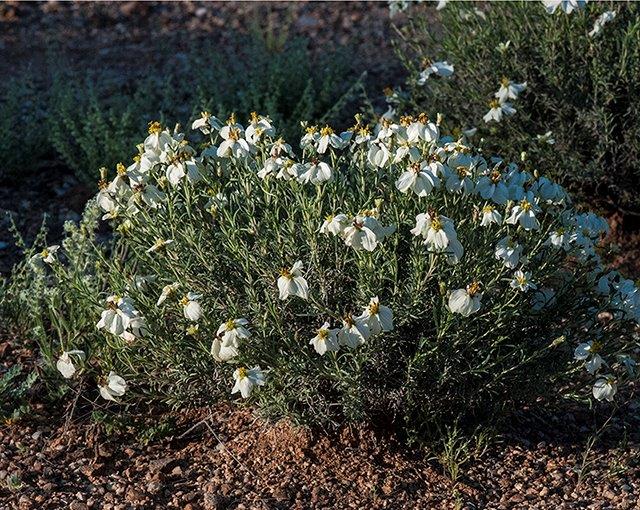Zinnia acerosa, Psilostrophe cooperi
- Photo(s): Deborah Bird, Brian Gersten
You can distinguish the Desert Zinnia by it’s white flowers vs. the yellow Paper Flower. Paper Flowers are taller and more leggy

A question often asked is: “How can you tell Desert Zinnia (Zinnia acerosa) apart from Paper Flower (Psilostrophe cooperi)?”. See the photos above and below.
When in flower, it’s easy. Desert Zinnia usually has white flowers, Paper Flower has yellow flowers. Paper Flower is so named and known for the papery, pale tan flowers’ appearance after the flower has faded. But Desert Zinnia flowers also fade in the same manner and look papery when spent. What’s a naturalist to do? Fortunately, there are many other ways to tell similar plants apart from each other besides flower color. You can notice the shape and size of the plant itself, the orientation of the leaves, color or hairiness of stems and leaves, the shape of fruit or seeds, or the location, habitat or elevation that the plant is growing in.
One of the things that you first notice is that the Paper Flower is tall and a little leggy. The stems and leaves are white and furry (tomentose). The leaves are long and strappy and spread out along the stem. The shrub itself is about 9-12 inches tall. If you are fortunate enough to see a Desert Zinnia close by, you can easily notice the difference in general appearance. The Desert Zinnia will be a somewhat smaller, more compact shrub, 4-9 inches tall. The overall look of leaves and bark is grayish, the leaves are small, needlelike (acerose) and are closely spaced along the stem. You can really see the difference in the enclosed picture. Even without flowers the stem and leaf features are noticeably different. Next time you’re out walking in Sabino Canyon, stop and notice these features and you will confidently be able to tell these two plants apart even if they’re not in flower.

A note on the etymology of these two plants: Zinnia is named for Johan G. Zinn (1729-1759) a German botanist, while acerosa means sharp, or with stiff needles.
Psilostrophe is from Greek psilos, naked or glabrous, and strophe, to turn, while cooperi is named for Dr. James Graham Cooper (1830-1902) an American geologist who collected plants in the Mojave in 1861

